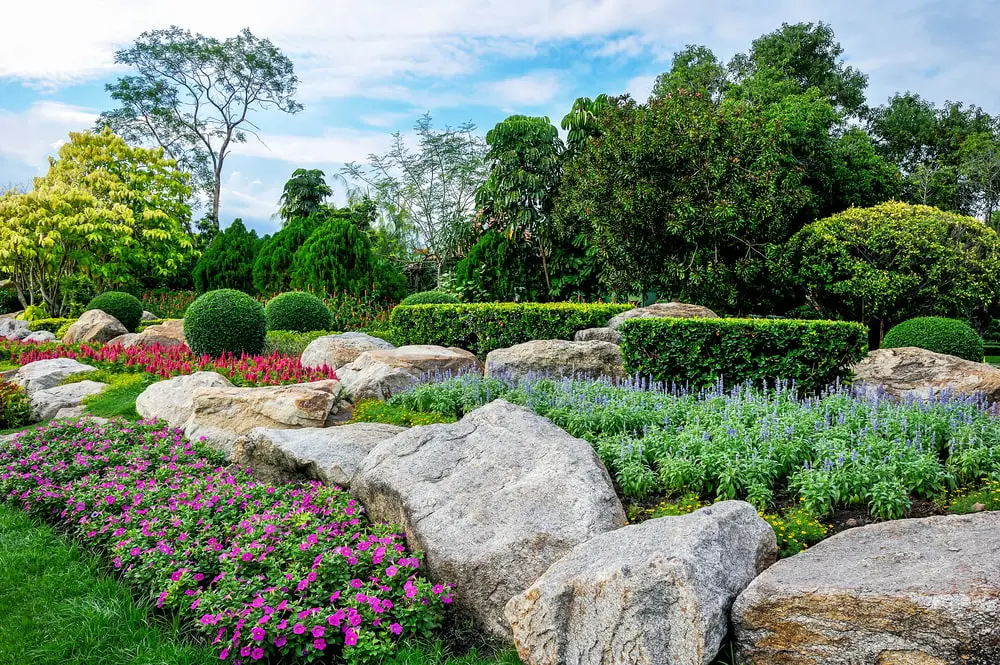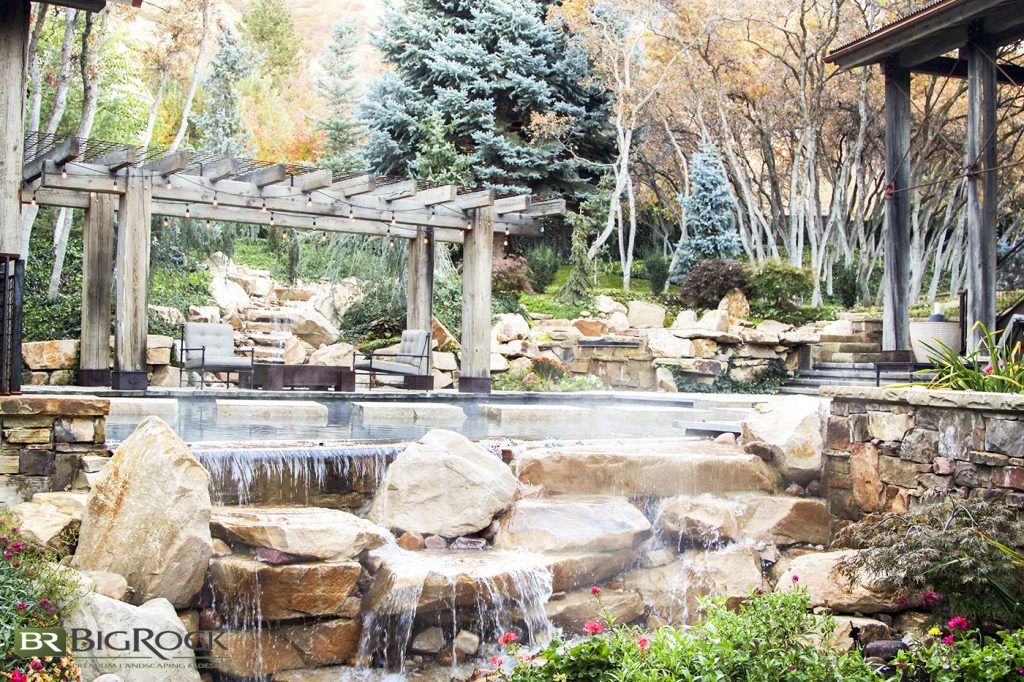Rumored Buzz on Hilton Head Landscapes
Wiki Article
The Facts About Hilton Head Landscapes Uncovered
Table of ContentsThe smart Trick of Hilton Head Landscapes That Nobody is Talking AboutHilton Head Landscapes Can Be Fun For AnyoneThe Best Guide To Hilton Head LandscapesWhat Does Hilton Head Landscapes Do?All about Hilton Head LandscapesThe Of Hilton Head LandscapesAn Unbiased View of Hilton Head LandscapesExcitement About Hilton Head Landscapes
Form compatibility is also a major component of unity in designone or two strikingly different forms benefit contrast and focus, yet generally all other types should have some similarities for an unified appearance. Texture describes exactly how rugged or fine the surface of the plant or hardscape material feels and/or looks.
Examples of plants with rugged texture include philodendrons, agaves, bromeliads, hollies, palms, and hydrangeas. Hardscape with rugged appearance includes rough-cut stone, rough-finished block, and unfinished wood with knots and an elevated grain. Matured or old building product that keeps a weather-beaten surface area is usually crude in texture. Features that develop great appearance include little foliage; slim, strappy leaves (grasses) or high, slim stems; tiny, thick twigs and tiny branches; long stems (vines); and tiny, fragile blossoms.
8 Simple Techniques For Hilton Head Landscapes
The majority of plants are average appearance, in that they can not be called having either rugged or fine texture. They are identified by medium-sized fallen leaves with straightforward shapes and smooth sides. The average-sized branches are not densely spaced nor widely spaced, and the overall type is commonly rounded or mounding. Medium-textured plants work as a background to web link and unify the crude- and fine-textured plants.
To make an area really feel smaller sized, place the rugged textures along the external border and the fine appearances closest to the visitor. The detail of the crude structure makes the plants appear closer and makes the room really feel smaller sized. The perceived appearance of plants can likewise alter with the distance from the plant.
Unknown Facts About Hilton Head Landscapes
Vibrant shades enhance the contrast and make the texture show up coarser, while soft colors can flatten appearance. Hardscape with a crude texturesuch as very rough rocks and vibrant, huge timberstends to make all plant material show up extra moderate textured. Developers usually develop a texture study (Figure 8) theoretically to help make a decision the setup of plant materials.Figure 8. Appearance study. Shade in plant material and hardscape includes rate of interest and selection to the landscape. Color is one of the most noticeable component in the landscape and is normally the focus of a lot of homeowners; nonetheless, it is also one of the most short-term component, typically lasting just a few weeks a year for private plants.
Not known Details About Hilton Head Landscapes
A straightforward description of the shade wheel consists of the 3 primaries of red, blue, and yellow; the three additional shades (a mix of 2 primaries) of environment-friendly, orange, and violet; and six tertiary shades (a mix of one surrounding main and additional color), such as red-orange. Shade theory discusses the connection of shades to each various other and exactly how they must be made use of in a structure.
Analogous (in some cases called harmonious) color pattern are any type of three to 5 shades that are surrounding on the shade wheel, such as red, red-orange, orange, yellow-orange, and yellow, or blue, blue-violet, and violet (landscapers hilton head island). The shades belong to each other due to the fact that they commonly include two key colors mixed to develop an additional and two tertiary shades, which suggests they share usual properties
Complementary colors are frequently found normally in blossoms; a common set is yellow and violet. Shade is discovered in the flowers, vegetation, bark, and fruit of plants.
The 5-Minute Rule for Hilton Head Landscapes
Green foliage in all its different shades is the dominant color by quantity, however various other shades catch interest quicker as a result of their high contrast to the shade eco-friendly. Shade is likewise found in structures, rocks, pavers, timber, and furniture. The majority of colors in all-natural materials, such as stone and timber, are normally muted and often tend to be variations of brownish, tan, and light yellow.Color is a crucial aspect for developing interest and range in the landscape. Shades have buildings that can affect feelings, spatial assumption, light quality, equilibrium, and emphasis. One property of color is described relative to temperaturecolors seem great or cozy and can impact emotions or feelings. Trendy shades often tend to be calming and ought to be used in areas for leisure and tranquility.
Indicators on Hilton Head Landscapes You Need To Know
Trendy colors have a tendency to decline and are perceived as being further away, making a space feel larger. Color can likewise be used to record focus and direct views.For instance, brilliant yellow, which has the highest possible intensity, also has a high contrast with all other colors (often referred to as a "pop" of color) and must be conserved. A tiny amount of extreme shade has as much aesthetic weight as a big quantity of a more suppressed or weak visit site color.
Analogous (sometimes called unified) color pattern are any type of 3 to 5 shades that are adjacent on the color wheel, such as red, red-orange, orange, yellow-orange, and yellow, or blue, blue-violet, and violet. The colors belong to every various other because they typically consist of 2 main shades blended to create a secondary and 2 tertiary shades, which means they share common properties.
Hilton Head Landscapes for Dummies
They tend to have high contrast in between them. The most usual sets are violet and yellow, red and environment-friendly, and blue and orange. Complementary shades are often found naturally in blossoms; a common set is yellow and violet. Color is found in the blossoms, vegetation, bark, and fruit of plants.Green vegetation in all its different shades is the dominant shade by amount, but various other colors record interest much more conveniently due to their high comparison to the color green - landscapers in bluffton sc - https://hilton-head-landscapes-46665114.hubspotpagebuilder.com/blog/transform-your-outdoor-space-with-hilton-head-landscapers. Shade is additionally discovered in buildings, rocks, pavers, timber, and furniture. Most shades in natural products, such as stone and timber, are normally soft and tend to be variants of brownish, tan, and pale yellow
Hilton Head Landscapes - Truths
Shades have buildings that can influence feelings, spatial assumption, light quality, equilibrium, and focus. Trendy shades often tend to be relaxing and should be made use of in locations for relaxation and tranquility.Trendy shades have a tendency to recede and are perceived as being further away, making an area feel larger. Shade can likewise be utilized to record focus and straight views - https://h1tnhdlndscps.bandcamp.com/album/hilton-head-landscapes.
For instance, intense yellow, which has the highest possible intensity, additionally has a high comparison with all other shades (typically called a "pop" of color) and ought to be used moderately. A percentage of intense color has as much visual weight as a large quantity of a more subdued or weak shade.
Report this wiki page